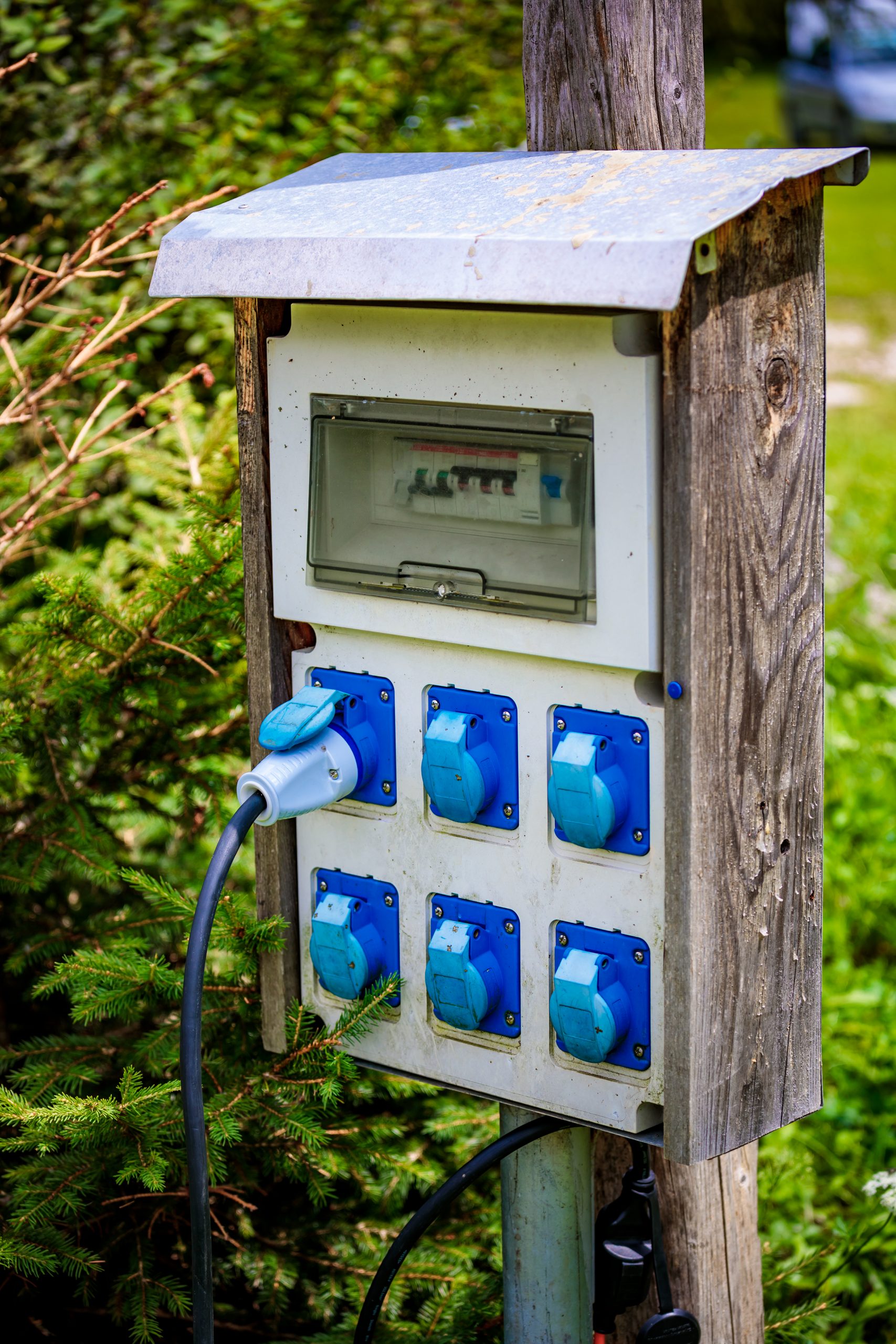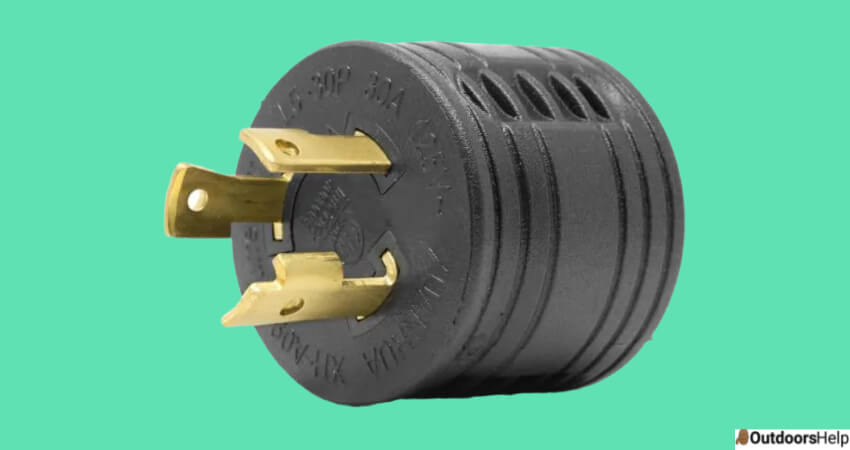Installing a 30-amp RV plug means you can call a professional to do it for you. It will cost you around $300-$1200. You can also break down the cost by doing a few things yourself. For instance, you can do basic things such as installing a pedestal post or even digging a trench conduit before the professional arrives.
Can You Install a 30-Amp RV Plug Yourself?

Suppose you think that the quoted amount by a professional is a bit too much; you can safely install your 30-amp RV plug by following a few steps.
If you are a DIY (Do It Yourself) enthusiast, you can install it with knowledge of fundamental electrical expertise. However, if you are a novice, you should hire a professional. Don’t let the guard down, even if you’re well-informed.
When working with electricity, always double- or even triple-check your work before turning it on. If you’re afraid of working with electricity, hire a professional. There’s nothing wrong with hiring an electrical professional to do the work.
What is the Process of Installing a 30-Amp RV Plug?

Calling a professional might be too pricey, assuming you have decided to do the workload yourself. Below are the few items needed for the installation.
1. A breaker box with enough room for a 30-amp single-pole breaker
2. A new single-pole 30-amp breaker. (The hot wire is connected to one terminal and one handle on this breaker.)
3. A sufficient UF-rated 10-2 copper cable connects the breaker box to the RV pedestal. If your run is longer than 150 feet, use 8-2 copper wires.
4. Either a separate weatherproof 30-amp (NEMA TT-30R) outlet for wall mounting or a weatherproof RV pedestal with a 30-amp (NEMA TT-30R) outlet.
5. One-inch diameter conduit for wires that can be buried at least 24 inches deep as required by code
6. Use wire staples or clamps to attach the cables running to the pedestal and breaker box.
After the preparation, you can do the actual installation work.
How to Install a 30-Amp RV Plug Like a Pro

So you’ve decided you will install your 30-amp RV plug/? Here is how to go about it:
1. Shut Down the Main Breaker
Shutting down the main breaker is the most crucial and fundamental step. The main breaker will be a 100-amp or 200-amp breaker. It should be turned off to ensure no power is supplied to the other breakers or the breaker box.
Keep in mind that another breaker box may have a main breaker that feeds into this one. Locate it and turn it off as well. There will be live wires linked to your main breaker even if it is turned off.
Avoid touching the live wires when working at the breaker box. Ensure the other breakers are dead with a voltmeter or a non-contact voltage tester. Cover the main breaker with tape once you’ve turned it off to deter anyone from turning it on while working.
2. Outlet Box
The next step is to install an outlet box. Place the RV pedestal or outlet where you plan to park your RV. Check the stability of the mounting place and follow the instructions that come with the equipment. It is the most straightforward step in the installation process.
3. New Breaker
Now is the time to install the new breaker. However, before installing the new breaker, ensure that all power is turned off. This is crucial when working at the breaker box, on the pedestal or outlet, or connecting cables.
As previously stated, the breaker box must have a 30-amp single-pole breaker. Install the new breaker in the empty slot, keeping the live wires from the main breaker terminals away from it.
4. Run the Wires
Run the wires through the conduit before connecting them to the breaker and the pedestal or outlet. Above the earth, the wire must pass through a protective sleeve before descending to 18 inches.
Check for any variances in local codes that may have stricter standards than the national code. It is possible to run wiring without a conduit if it is rated for outdoor use and is buried at least 24 inches deep. Nonetheless, it still needs a conduit to go into and out of the ground.
5. Connect the Wires
After running the wires, connect them to the breaker. The green ground wire connects to the ground bus, whereas the white neutral wire connects to the neutral bus. Connect the black 120-volt hot wire to the terminal of the new 30-amp breaker.
6. Run the Cables
Then the next step is to run the cables in the outlet box. Proceed to the pedestal or outlet after the wires connect to the breaker box. The outlet’s back terminals are usually clearly labeled. They can be found on a pedestal or in their container, which is excellent news.
Connect the green ground wire to the back of the U-shaped hole’s green terminal. At 7 o’clock, from the back of the outlet, connect the white neutral wire to the terminal labeled white or neutral (typically a silver screw).
At 5 o’clock, from the back of the outlet, the black 120V hot wire connects to the hot terminal (typically a brass-colored screw).
7. Switch On the Breaker & Test
The last step of this process is to switch on the breaker and test. It’s almost time to put what you’ve learned to the test. First and foremost, make sure that your work at the breaker box and the outlet is correct. Don’t switch it on until you’ve double-checked the wiring.
If unsure, re-energize the circuit breakers and plug them in once everything appears to be in working condition. If everything seems perfect and working, you’re ready to go.
Frequently Asked Questions
Where Should You Install the 30-Amp RV Receptacles?
Install the 30-amp RV receptacle near your RV’s parking spot. The most frequent power source is an RV power pedestal, similar to what you’d see in a commercial RV park. It’s possible to use a standard 30-amp RV plug attached to a wall or post, but installation would be more challenging. The receptacle must be important no matter where it is placed.
Extra reinforcement is required since the stress of plugging and disconnecting a 30-amp RV plug is greater than that of a regular domestic 15/20-amp outlet.
Reference 1: RVelectricity: How to install a 30-amp RV outlet at home – RV Travel
Reference 2: Cost to Install an Electrical RV Hookup | 2022 Costimates.com

